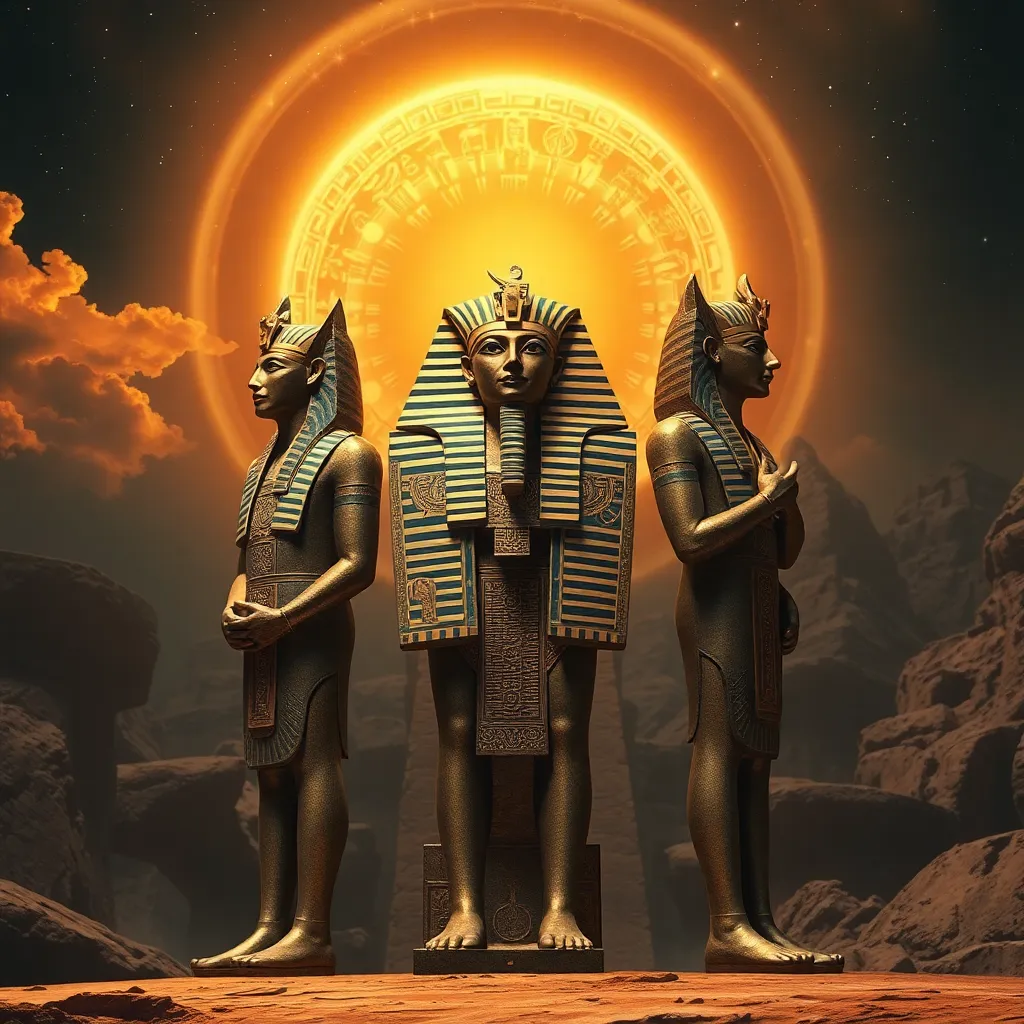The Aten and the Concept of Cosmic Harmony
I. Introduction
The Aten, a significant deity in ancient Egyptian religion, is often identified as the sun disc and represents one of the most profound shifts in the religious landscape of ancient Egypt. This article delves into the Aten’s role in ancient Egyptian belief systems and its embodiment of cosmic harmony.
Cosmic harmony is a concept that resonates in various cultures, emphasizing the interconnection of all things within the universe. In many traditions, this harmony is manifested through the relationship between the divine, nature, and humanity. The purpose of this article is to explore the intricate connection between the Aten and the overarching theme of cosmic harmony in ancient Egyptian mythology.
II. Historical Context of the Aten
The Aten rose to prominence during the reign of Pharaoh Akhenaten, who radically transformed the religious landscape of Egypt by promoting the worship of this singular deity. Akhenaten’s religious reforms, often viewed as a form of monotheism, have led scholars to debate the implications of the Aten’s worship on the traditional polytheistic practices of the time.
In contrast to traditional Egyptian deities, who often had complex personalities and domains, the Aten was presented as a singular, abstract force representing the life-giving power of the sun. This shift was significant as it marked a departure from the established pantheon of gods, such as Ra, Osiris, and Isis.
As a symbol of monotheism, the Aten was not just a sun god but represented a broader philosophical concept that would influence future religious thought.
III. The Symbolism of the Aten
The Aten is primarily represented as a sun disk with rays extending towards the earth, often depicted with hands at the end of each ray offering ankh symbols, representing life. This imagery conveys the Aten’s role as a giver of life and sustenance.
Artistic depictions of the Aten often reflect its significance in daily life and the cosmos. Common representations include:
- Aten as a radiant sun disc.
- Rays extending towards the pharaoh and humanity.
- Symbolic offerings of life through the ankh.
The Aten’s role in Egyptian mythology is profound, serving not only as a deity but also as a cosmological principle that underscores the interconnectedness of the universe.
IV. Cosmic Harmony in Ancient Egyptian Beliefs
Central to ancient Egyptian spirituality is the concept of Ma’at, which embodies truth, balance, and cosmic order. Ma’at is essential for the stability of the universe and the prosperity of society.
The relationship between the gods and the universe was viewed as a dynamic interplay, where each deity had a role in maintaining the cosmic balance. The pharaoh, as a divine representative on earth, was tasked with the sacred duty of upholding Ma’at, ensuring harmony in both the spiritual and earthly realms.
V. The Aten and Cosmic Order
The Aten embodies principles of balance and order, serving as a unifying force in the cosmos. Through its rays, the Aten connects the divine with the earthly, illustrating the belief that harmony can be achieved through the acknowledgment of a singular divine presence.
Implications of the Aten’s worship extend to the natural world and human society, suggesting that by aligning oneself with the Aten, one can achieve personal and societal harmony.
VI. Philosophical Interpretations of the Aten
Ancient Egyptian philosophy regarding the divine often revolves around understanding the relationship between the human experience and the cosmos. The Aten, as a representation of divine unity, offers insights into how ancient Egyptians viewed the nature of existence.
Connections to modern philosophical thought on harmony can be traced through the Aten’s teachings, emphasizing the importance of balance in life. Furthermore, the Aten’s monotheistic attributes may be seen as a precursor to later philosophical and religious ideas that center around a singular divine entity.
VII. Legacy of the Aten and Cosmic Harmony
The influence of the Aten extends beyond ancient Egypt, impacting subsequent religious and philosophical traditions. The shift towards monotheism observed during Akhenaten’s reign laid the groundwork for future theological developments.
In terms of art, literature, and culture, the Aten’s representation as a source of life and light has permeated various forms of expression throughout history. Its legacy persists in discussions surrounding the nature of divinity and harmony in contemporary society.
VIII. Conclusion
In summary, the Aten’s role in ancient Egyptian religion offers a unique perspective on the concept of cosmic harmony. Through its symbolism and historical significance, the Aten serves as a vital link between the divine and the universe, embodying the principles of balance and order.
Reflecting on the importance of the Aten enhances our understanding of ancient beliefs and their relevance in today’s discussions about spirituality and harmony. As we continue to explore these ancient teachings, we uncover timeless truths that resonate across cultures and epochs.




